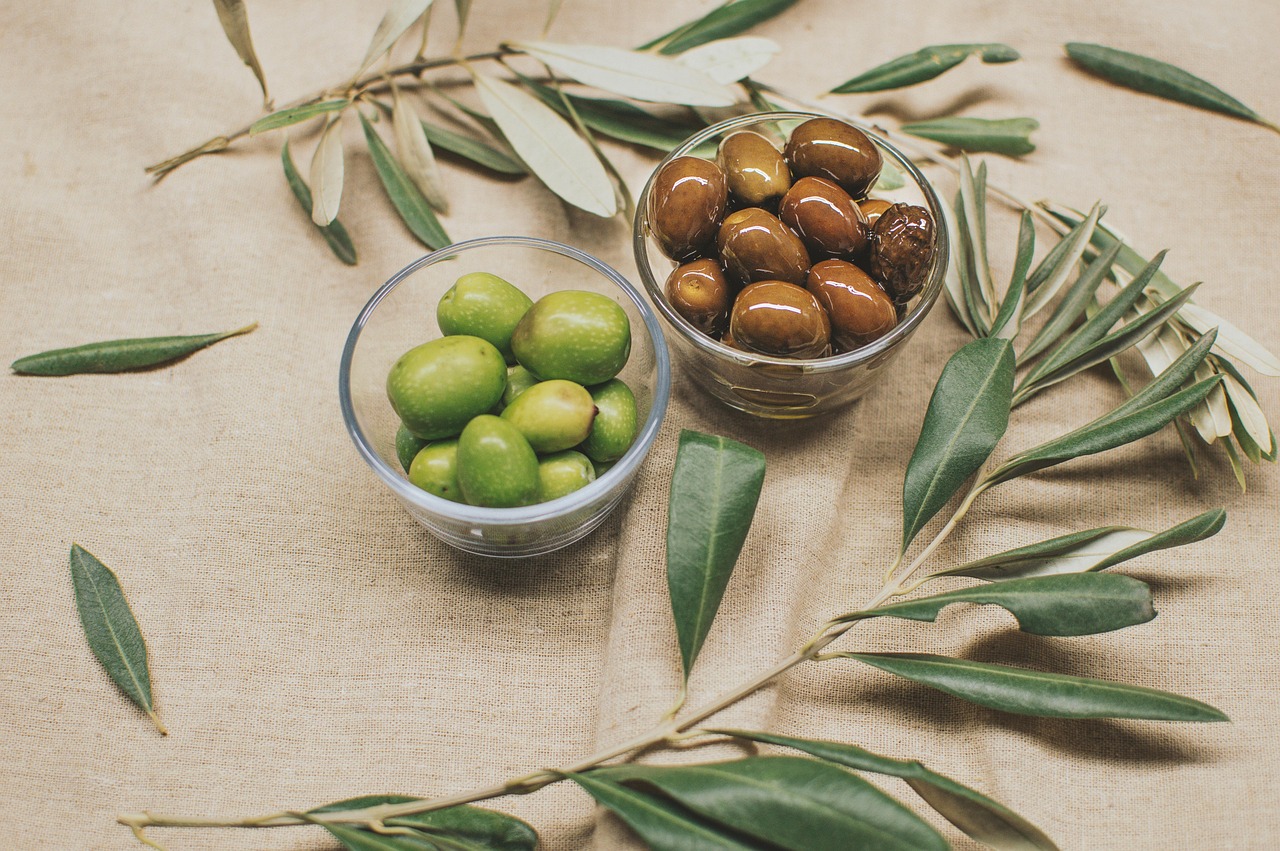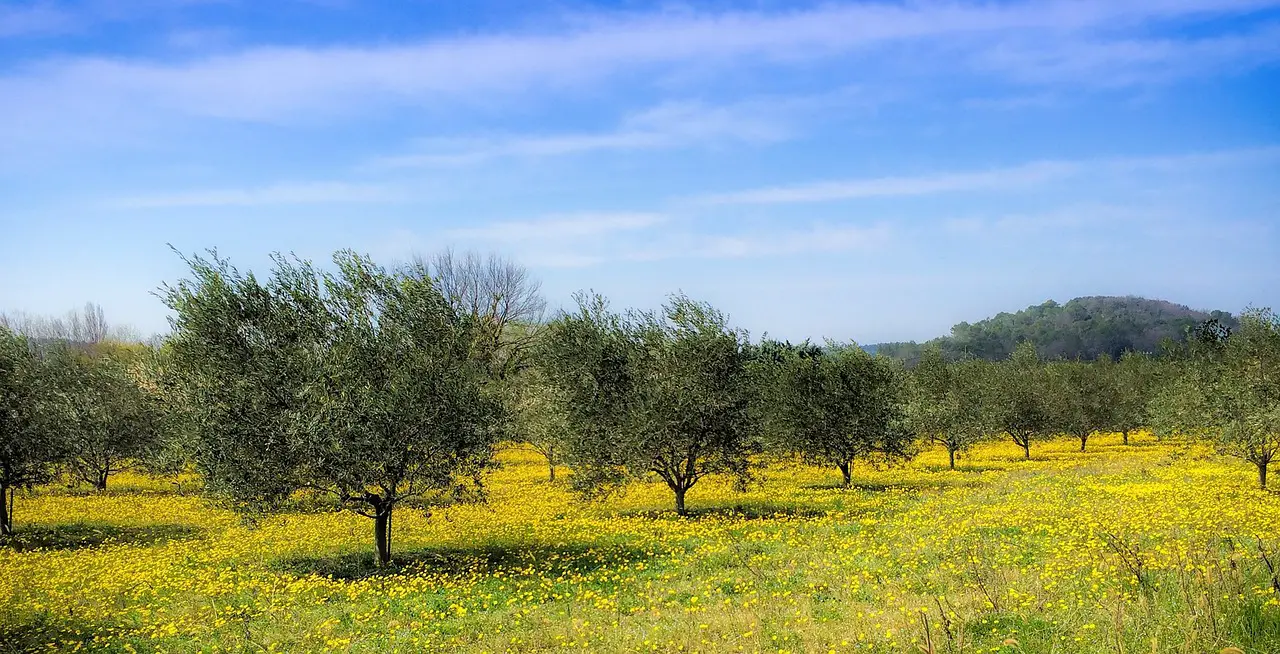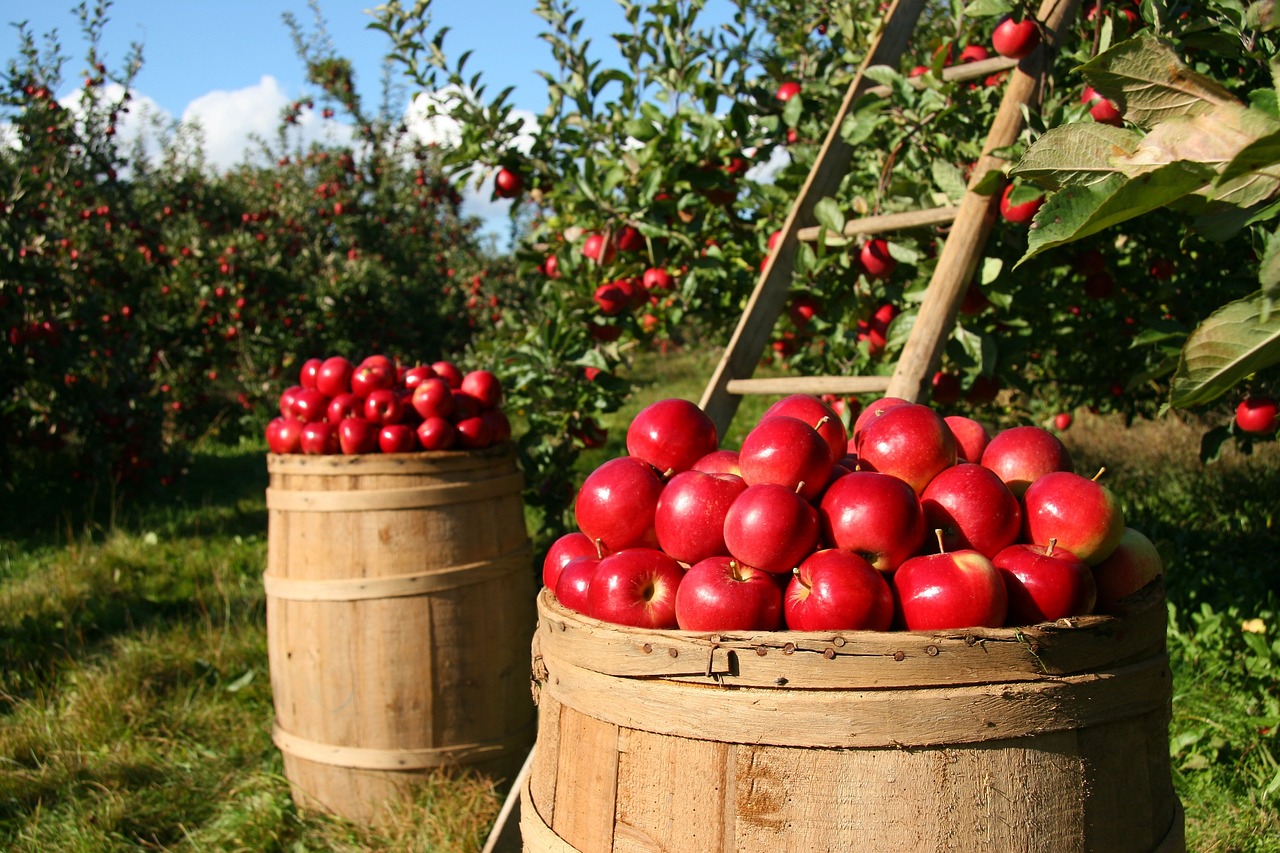Olive orchard pruning can enhance biodiversity by creating diverse habitats, improving soil health, and promoting beneficial insects. Proper techniques foster not only healthier trees but also a thriving ecosystem that supports various plant and animal species.
Olive orchards are not just a source of olives; they are vital ecosystems that can support a wide range of biodiversity. Pruning is a crucial practice in olive cultivation, which involves selectively removing certain parts of the tree. This process not only enhances the health and productivity of the olive trees but also contributes significantly to the surrounding environment. When done correctly, pruning creates space for light and air circulation, promotes growth, and can lead to a more diverse biological community.

In recent years, the importance of biodiversity in agricultural systems has gained attention. Biodiversity refers to the variety of life forms in a given habitat. It encompasses the variety within species, between species, and of ecosystems. In olive orchards, higher biodiversity can lead to improved pest control, better pollination, and enhanced resilience against climate change.
The Role of Pruning in Enhancing Biodiversity
Pruning plays an essential role in enhancing biodiversity within olive orchards. By managing tree growth, farmers can create an environment that encourages various species to thrive. Here are some key benefits of olive orchard pruning for biodiversity:
- Improved Light Penetration: Pruning opens up the canopy, allowing more sunlight to reach lower branches and ground vegetation. This promotes a diverse understorey of plants that can support insects and other wildlife.
- Habitat Creation: By maintaining a mixture of tree heights and shapes, pruned orchards can provide habitats for birds, small mammals, and beneficial insects.
- Soil Health: Pruning can stimulate root growth and soil microbial activity, leading to healthier soil. Healthy soil supports a wider range of plant life.
- Pest Management: A diverse ecosystem can help control pests naturally. Predators attracted by diverse flora can keep harmful insect populations in check.
Research shows that olive orchards with rich biodiversity can yield better long-term results for both farmers and the environment. Maintaining this balance requires knowledge of the specific needs of both the olive trees and the native species in the area.

Best Practices for Pruning Olive Orchards
To maximize biodiversity through pruning, farmers should adopt specific best practices. These practices focus on timing, technique, and understanding the local ecosystem:
1. Timing
Pruning should be performed during the dormant season, typically late winter to early spring. This timing minimizes stress on trees and allows for optimal recovery during the growing season.
2. Technique
Using appropriate techniques is crucial for maintaining tree health and encouraging biodiversity. Here are some recommended pruning techniques:

- Thinning Cuts: Remove entire branches at their point of origin. This helps improve air circulation and light penetration throughout the tree.
- Heading Cuts: Shorten branches to promote lateral growth. This can help in creating a bushier canopy that supports various wildlife.
- Selective Pruning: Focus on removing weak or diseased branches while preserving healthy ones to maintain the tree’s overall structure.
3. Understanding Local Ecosystems
Farmers should be aware of the local flora and fauna when pruning. Encouraging native species in the understorey and edges of orchards can boost biodiversity significantly. For instance, planting native wildflowers or shrubs can attract pollinators like bees and butterflies.
| Benefit | Description |
|---|---|
| Enhances Pollination | Pruned orchards attract more pollinators through improved floral diversity. |
| Supports Pest Predators | A diverse habitat encourages natural predators to control pest populations. |
| Improves Soil Quality | Healthy trees contribute to better soil structure and microbial communities. |
| Promotes Wildlife | A mixture of tree heights provides shelter for various wildlife species. |
The integration of these practices not only benefits the olive trees but also nurtures a vibrant ecosystem within the orchard. By considering biodiversity in their management strategies, olive growers can create sustainable environments that benefit both agriculture and nature.
As we delve deeper into the topic, understanding the connections between olive tree health and biodiversity will further illustrate how pruning can be an effective tool for sustainable farming practices.

The Importance of Soil Health in Olive Orchards
Soil health is a fundamental aspect of successful olive cultivation. Healthy soil promotes strong tree growth and contributes to the overall biodiversity of the orchard. The relationship between soil health and biodiversity is intricate. A diverse microflora and fauna in the soil enhance nutrient cycling and improve plant health.
1. Soil Composition and Structure
Soil composition includes minerals, organic matter, water, and air. The structure refers to how these components are arranged. Healthy soil has good structure, allowing for efficient water drainage and root penetration. Key components of healthy soil include:
- Organic Matter: Composed of decomposed plant and animal material, organic matter is vital for nutrient retention and soil structure.
- Microbial Life: Beneficial bacteria and fungi play a crucial role in nutrient cycling and disease suppression.
- Earthworms: These organisms improve soil aeration and help integrate organic matter into the soil.
2. Enhancing Soil Health Through Pruning Practices
Pruning practices can significantly affect soil health. By managing tree canopies, farmers can influence how water and nutrients are utilized within the orchard. Here are some ways pruning enhances soil health:
- Reduced Soil Compaction: Pruning helps maintain adequate spacing between trees. This allows for easier access for machinery and reduces soil compaction.
- Increased Organic Matter: The removal of pruned branches can be composted or mulched, returning organic matter to the soil.
- Improved Water Management: Properly pruned trees can better manage rainfall, reducing runoff and promoting deep root growth.
Biodiversity and Pest Management in Olive Orchards
Pest management is critical in olive orchards, where pests can threaten both yield and biodiversity. Integrated Pest Management (IPM) strategies that promote biodiversity can lead to healthier orchards. Here are some effective methods:
1. Encouraging Beneficial Insects
Beneficial insects play a vital role in controlling pest populations. By fostering a habitat that attracts these insects, farmers can naturally manage pests. Some beneficial insects include:
- Lacewings: These insects feed on aphids and other soft-bodied pests.
- Ladybugs: Known for their appetite for aphids, ladybugs are essential allies in pest control.
- Parasitic Wasps: These wasps lay eggs in or on pest insects, effectively controlling their populations.
2. Creating Diverse Habitats
A diverse range of plants within and around olive orchards can attract beneficial insects and provide habitats for wildlife. Some practices to create these habitats include:
- Planting Cover Crops: Growing cover crops like clover or vetch can improve soil health and provide food for beneficial insects.
- Maintaining Wild Edges: Leaving areas wild at the edges of orchards allows native plants to flourish, attracting pollinators and pest predators.
- Diverse Cropping Systems: Intercropping with other plant species can create a more complex ecosystem that supports various wildlife.
The Role of Native Plants in Supporting Biodiversity
Incorporating native plants into olive orchards can significantly enhance biodiversity. Native plants are adapted to local conditions and provide numerous benefits, including:
1. Attracting Pollinators
Many native plants produce flowers that attract bees, butterflies, and other pollinators essential for fruit set in olive trees. By planting native species, farmers can create a pollinator-friendly environment that boosts yields.
2. Providing Shelter and Food
Native plants offer food sources and shelter for various wildlife species, including birds and small mammals. This diversity can help regulate pest populations naturally. Here are some examples of beneficial native plants:
- Aster: Attracts a variety of pollinators.
- Echinacea (Coneflower): Provides nectar for butterflies and bees.
- Goldenrod: Offers late-season blooms for pollinators.
3. Enhancing Soil Fertility
Some native plants have deep root systems that help improve soil structure and nutrient availability. For example, legumes can fix nitrogen in the soil, enhancing fertility for surrounding crops.
The integration of these practices not only supports biodiversity but also promotes sustainable farming methods that benefit both the environment and orchard productivity. Understanding the ecological relationships within olive orchards allows farmers to make informed decisions that enhance both agricultural performance and environmental health.
Water Management in Olive Orchards
Water management is a crucial aspect of olive orchard management, especially in the context of enhancing biodiversity. Effective water use can significantly impact tree health, soil quality, and the overall ecosystem. Understanding the relationship between water management and biodiversity can help farmers create more sustainable practices.
1. Irrigation Techniques
Implementing the right irrigation techniques can conserve water and promote healthy growth in olive trees. Here are some effective methods:
- Drip Irrigation: This method delivers water directly to the root zone, minimizing evaporation and runoff. It promotes deep root growth, which can enhance soil structure.
- Rainwater Harvesting: Collecting rainwater for irrigation can reduce reliance on groundwater and surface water sources. It helps in conserving local ecosystems by maintaining natural water cycles.
- Soil Moisture Monitoring: Using sensors to monitor soil moisture levels helps determine the precise irrigation needs of olive trees, preventing overwatering and promoting efficient water use.
2. Improving Water Retention
Enhancing soil’s ability to retain water is essential for sustainable olive orchards. Here are some techniques to improve water retention:
- Mulching: Applying organic mulch around the base of trees helps retain moisture, suppress weeds, and improve soil quality as it decomposes.
- Cover Cropping: Growing cover crops during the off-season can improve soil structure and reduce erosion, allowing better water infiltration and retention.
- Contour Plowing: This technique involves plowing along the contours of the land, which can help slow down water runoff and increase water absorption into the soil.
The Role of Biodiversity in Climate Resilience
Biodiversity plays a significant role in increasing the resilience of olive orchards to climate change. Diverse ecosystems can adapt better to changes in temperature and precipitation patterns. Here are some ways biodiversity contributes to climate resilience:
1. Enhanced Pest Resistance
A biodiverse orchard can reduce the risk of pest outbreaks. When multiple species coexist, it creates a more balanced ecosystem, which can help prevent any single pest from becoming dominant. Key benefits include:
- Naturally Balanced Populations: A variety of plants can attract different pollinators and pest predators, naturally regulating pest populations.
- Disease Suppression: Diverse plant species can inhibit the spread of diseases that affect olive trees, as certain plants may harbor beneficial microbes that protect against pathogens.
2. Soil Health and Carbon Sequestration
A healthy, diverse ecosystem contributes to improved soil structure and fertility. This, in turn, enhances carbon sequestration, a vital process for mitigating climate change. Here’s how biodiversity aids in this process:
- Diverse Root Systems: Different plants have various root structures that improve soil aeration and stability, promoting carbon storage in soil.
- Organic Matter Contribution: Diverse plant life contributes organic matter through leaf litter and root decay, enriching the soil and enhancing its ability to store carbon.
Integrating Technology for Sustainable Practices
Modern technology plays an essential role in promoting biodiversity in olive orchards. By integrating innovative tools and techniques, farmers can enhance their management practices. Here are some examples:
1. Precision Agriculture
Precision agriculture uses technology to monitor and manage field variability in crops. Key components include:
- GPS Technology: Farmers can use GPS to map their orchards and identify areas that may require specific attention regarding pruning or irrigation.
- Drones: Drones can survey orchards to assess plant health, monitor pest populations, and provide data for informed decision-making.
2. Data Analytics
Using data analytics can help farmers make better decisions about their orchards. By analyzing data on weather patterns, soil health, and plant growth, farmers can optimize their practices for sustainability. Some benefits include:
- Improved Resource Allocation: Data-driven insights allow for more efficient use of water, fertilizers, and pesticides.
- Enhanced Biodiversity Monitoring: Analyzing species diversity within the orchard helps farmers understand the ecological health of their land.
The Economic Benefits of Biodiversity
Biodiversity is not just beneficial for environmental health; it also has significant economic advantages for olive growers. Implementing practices that support biodiversity can lead to increased profitability. Here are some key points:
1. Higher Crop Yields
Diverse ecosystems tend to be more productive. A healthy balance of pest predators can lead to fewer crop losses due to pest damage. Additionally, improved pollination from a diverse range of plants enhances fruit set in olive trees.
2. Reduced Input Costs
Biodiversity can lower the need for chemical inputs such as fertilizers and pesticides. A natural balance reduces pest populations and improves soil fertility through organic matter contributions, allowing farmers to save on these costs over time.
The integration of these practices supports not only the ecological integrity of olive orchards but also enhances agricultural productivity and profitability. By embracing biodiversity, farmers create sustainable systems that benefit both their operations and the environment.
As olive growers continue to face challenges such as climate change, pest pressures, and soil degradation, focusing on biodiversity through practices like pruning becomes increasingly essential. By enhancing biodiversity in olive orchards, farmers can create a more resilient agricultural system that benefits not only their crops but also the surrounding environment.
The Importance of Education and Community Engagement
Education and community involvement are crucial for promoting biodiversity in olive orchards. Farmers can benefit from sharing knowledge and resources with each other. Here are some strategies to enhance education and community engagement:
- Workshops and Training: Organizing workshops that focus on sustainable practices, including pruning techniques and biodiversity management, can empower farmers with the skills they need.
- Collaboration with Experts: Partnering with agricultural extension services, universities, and research institutions can provide farmers with the latest insights on biodiversity and sustainable practices.
- Community Gardens: Establishing community gardens can serve as a platform for local farmers to experiment with biodiversity-friendly practices and share their findings.
Research and Innovation in Olive Cultivation
Continued research into the effects of biodiversity on olive orchard health is essential. Innovative practices and technologies can further enhance the relationship between pruning, biodiversity, and productivity. Some areas for future research include:
- Genetic Diversity: Exploring different olive cultivars that may better adapt to local pests and climate conditions can lead to enhanced resilience.
- Soil Microbial Studies: Understanding how diverse microbial communities affect soil health and plant growth can inform better management practices.
- Technological Advancements: Investigating new technologies, such as automated monitoring systems for biodiversity indicators, can help farmers make data-driven decisions.
Policy Support for Biodiversity in Agriculture
Government policies play a significant role in promoting biodiversity in agricultural systems. Policymakers can encourage sustainable practices through various means:
- Incentives for Sustainable Practices: Financial incentives for farmers who implement biodiversity-friendly practices can motivate more growers to adopt these methods.
- Research Funding: Providing funding for research into sustainable agriculture and biodiversity can lead to new insights and innovations.
- Public Awareness Campaigns: Promoting the benefits of biodiversity in agriculture to the public can increase consumer demand for sustainably produced products.
Final Thoughts
In conclusion, olive orchard pruning for biodiversity is a multifaceted approach that offers numerous benefits for both the environment and agricultural productivity. By implementing effective pruning techniques and integrating biodiversity-friendly practices, farmers can enhance soil health, improve pest management, and create a more resilient ecosystem. The synergy between biodiversity and olive cultivation fosters not only healthier trees but also a sustainable agricultural landscape that supports diverse plant and animal life.
The economic advantages, including higher crop yields and reduced input costs, further underscore the importance of embracing these sustainable practices. As growers navigate the complexities of modern agriculture, prioritizing biodiversity will be key to ensuring the long-term viability of olive orchards.
As we move forward, collaboration among farmers, researchers, policymakers, and local communities will be vital in promoting biodiversity in olive orchards. Together, we can work towards a future that values sustainability, enhances ecological health, and supports the livelihoods of those who cultivate this essential crop.
